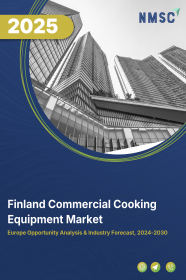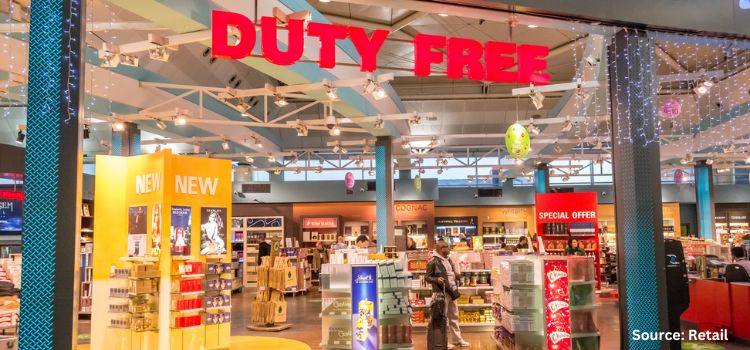
Food Safety Testing Market by Contaminant (Pathogens, Pesticides, Genetically Modified Organism (GMOs), Chemical and Toxin, Mycotoxin, Allergens, and Others), by Technology (Traditional and Rapid), and by Food Tested (Meat & Meat Products, Cereal, Grains and Pulses, Seafood, Dairy & Dairy Products, Processed Foods, Fruits & Vegetables and Others) – Global Opportunity Analysis and Industry Forecast 2022-2030
US Tariff Impact on Food Safety Testing Market
Trump Tariffs Are Reshaping Global Business
Market Definition:
Global Food Safety Testing Market size was valued at USD 18.95 billion in 2021 and is predicted to reach USD 36.94 billion by 2030 with a CAGR of 7.7% from 2022-2030.
Food safety testing is defined as the inspection of food products for contaminants such as adulteration, toxic substances, harmful chemicals, and other hazardous materials. Through food testing, food producers and regulatory bodies ensure that food items are free from any pesticides, antibiotics, and heavy metals. Therefore, it plays an important role to ensure good quality products, which are safe from harmful and disease-causing organisms as well as substances.
Market Dynamics and Trends:
The demand for food safety testing is increasing due to surge in chemical contamination cases in food items. Also, factors such as rise in consumer awareness about food safety and advancements in rapid inspection methods are expected to propel the growth of the market during the forecast period.
Moreover, the implementation of stringent regulations by many leading food safety organizations, such as, European Food Safety Authority, Food Safety and Standards Authority of India, Food Standards Agency, and Canadian Food Inspection Agency, to ensure better health of the consumers is expected to drive the growth of the market.
However, complexity in testing techniques along with lack of proper regulation in developing as well as under developed economies are factors expected to hamper the market growth. On the other hand, innovation and adoption of new technologies such as chromatography and spectrometry are opportunities for medium and small-scale laboratories to expand their service offerings. The new technologies offer higher sensitivity, accuracy, and reliability that are expected to create lucrative growth opportunities for the market players in coming future.
Market Segmentations and Scope of the Study:
The food safety testing market has been segmented based on contaminant, technology, food tested, and geography. Based on contaminant, the market is divided into pathogens, pesticides, genetically modified organism (GMOs), chemical and toxin, mycotoxin, allergens, and others. The pathogens are sub-segmented into e coli, salmonella, campylobacter, listeria, and other pathogens. Based on technology, the market is divided into traditional and rapid. The rapid segment is further sub-divided into convenience-based, polymerase chain reaction (pcr), immunoassay, and chromatography & spectrometry. Based on food tested, the market is divided into meat & meat products, cereal, grains and pulses, seafood, dairy & dairy products, processed foods, fruits & vegetables, and others. The geographic breakdown and analysis of each of the aforesaid segments includes regions comprising of North America, Europe, Asia-Pacific, and RoW.
Geographical Analysis:
North America holds the lion share of global food safety testing market and is expected to continue dominating the market during the forecast period. This is attributed to factors such as adoption of advanced technologies and stringent regulations by the regulatory bodies. Also, high prevalence of food-related allergies among consumers has significantly increased the importance of safety testing. Therefore, Food and Drug Association (FDA) of the U.S. had made food safety testing mandatory during every stage of production and processing in the country.
However, Asia Pacific is expected to show a steady rise in the food safety testing market due to strong growth in food and beverage industry, coupled with increased focus on food safety. Also, China is the biggest hub of food manufacturing companies, which majorly require food safety testing equipment. This, along with strict safety policies imposed in the country are creating considerable demand for food safety testing market in this region.
Competitive Landscape:
The market comprises of various players such as SGS SA, Eurofins Central Analytical Laboratories Inc, Eurofins Scientific, Intertek Group plc, Idexx Laboratories Inc., Bureau Veritas, Bio-Rad Laboratories, NSF international, ALS Limited, and TUV SUD. These manufacturers are actively indulging in R&D initiatives, product & technology innovations, and industrial collaborations to enhance their product, increase their growth, and geographical reach.
For instance, in May 2020, Bureau Veritas India, announced their collaboration with Leela Palaces (India), with the aim to launch “Surakhsha” an initiative to provide high standards food safety and hygiene as well as leverage technological services for maintaining the hygiene standards to their associates and guests. Moreover, in November 2021, NSF International announced that they have launched the virtual instructor-led training courses related to food safety hazards techniques and how to maintain hygiene condition. The course will help to train staffs including new hires and temporary workers at food industry.
Key Benefits
-
The food safety testing market report provides the quantitative analysis of the current market and estimations through 2022-2030 that assists in identifying the prevailing market opportunities to capitalize on.
-
The study comprises a deep dive analysis of the food safety testing market trend including the current and future trends for depicting the prevalent investment pockets in the market.
-
The information related to key drivers, restraints and opportunities and their impact on the food safety testing market is provided in the report.
-
The competitive analysis of the market players along with their market share in the food safety testing market.
-
The SWOT analysis and Porters Five Forces model is elaborated in the study.
-
Value chain analysis in the market study provides a clear picture of the stakeholders’ roles.
Key Market Segments:
By Contaminant
-
Pathogens
-
E. Coli
-
Salmonella
-
Campylobacter
-
Listeria
-
Other Pathogens
-
-
Pesticides
-
Genetically Modified Organism (GMOs)
-
Chemical and Toxin
-
Mycotoxin
-
Allergens
-
Others
By Technology
-
Traditional
-
Rapid
-
Convenience-Based
-
Polymerase Chain Reaction (PCR)
-
Immunoassay
-
Chromatography & Spectrometry
-
By Food Tested
-
Meat & Meat Products
-
Cereal
-
Grains and Pulses
-
Seafood
-
Dairy & Dairy Products
-
Processed Foods
-
Fruits & Vegetables
-
Others
By Geography
-
North America
-
U.S.
-
Canada
-
Mexico
-
-
Europe
-
UK
-
Germany
-
France
-
Russia
-
Rest of Europe
-
-
Asia-Pacific
-
China
-
India
-
Japan
-
Australia
-
Rest of Asia-Pacific
-
-
RoW
-
Latin America
-
Middle east
-
Africa
-
Key Players:
-
SGS SA
-
Eurofins Central Analytical Laboratories Inc
-
Eurofins Scientific
-
Intertek Group plc
-
Idexx Laboratories Inc.
-
Bureau Veritas
-
Bio-Rad Laboratories
-
NSF International
-
ALS Limited
-
TUV SUD
REPORT SCOPE AND SEGMENTATION:
|
Parameters |
Details |
|
Analysis Period |
2021–2030 |
|
Base Year Considered |
2021 |
|
Forecast Period |
2022–2030 |
|
Market Size Estimation |
Billion (USD) |
|
Market Segmentation |
By Contaminant (Pathogens, Pesticides, Genetically Modified Organism (GMOs), Chemical and Toxin, Mycotoxin, Allergens, and Others), by Technology (Traditional and Rapid), and by Food Tested (Meat & Meat Products, Cereal, Grains and Pulses, Seafood, Dairy & Dairy Products, Processed Foods, Fruits & Vegetables and Others) |
|
Geographical Segmentation |
North America (U.S., Canada, Mexico) Europe (UK, Germany, France, Russia, Rest of Europe), Asia-Pacific (China, India, Japan, Australia, Rest of Asia-Pacific), Rest of the World (Latin America, Middle east, Africa) |
|
Companies Profiled |
SGS SA, Eurofins Central Analytical Laboratories Inc, Eurofins Scientific, Intertek Group plc, Idexx Laboratories Inc., Bureau Veritas, Bio-Rad Laboratories, NSF international, ALS Limited, and TUV SUD. |

















 Speak to Our Analyst
Speak to Our Analyst





















